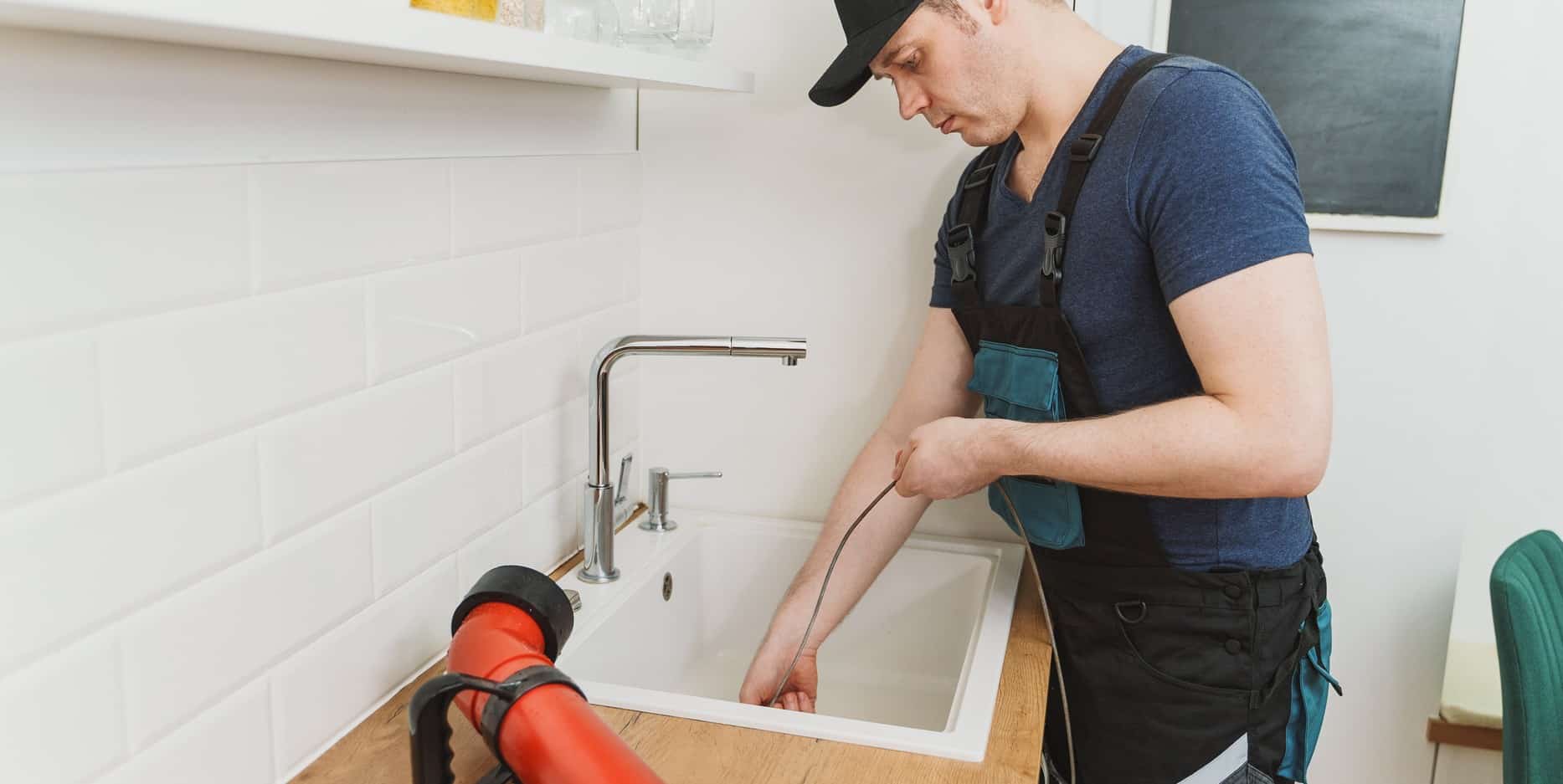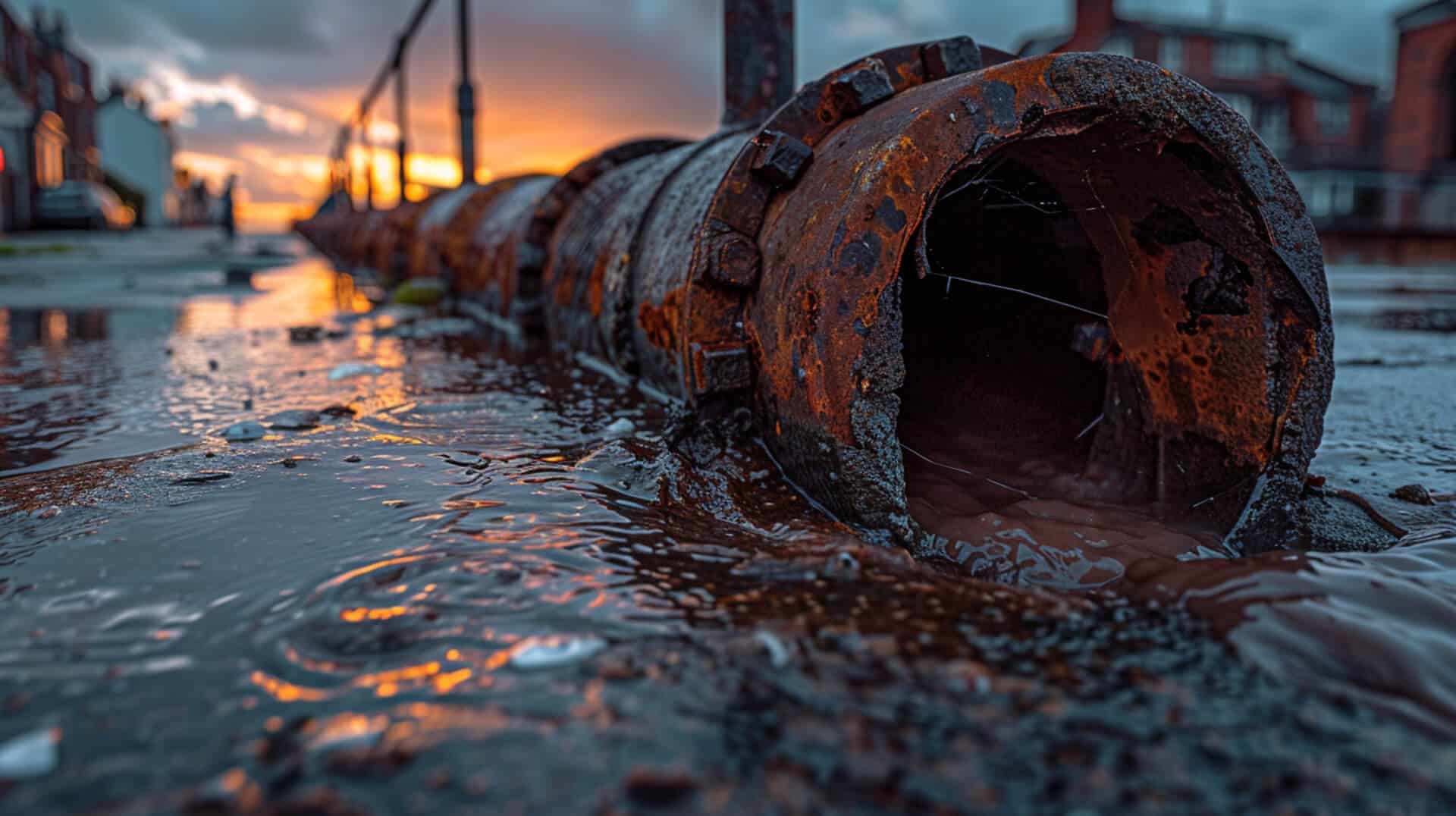 How Dirt and Mud Can Lead to Severe Drain Blockages
How Dirt and Mud Can Lead to Severe Drain Blockages
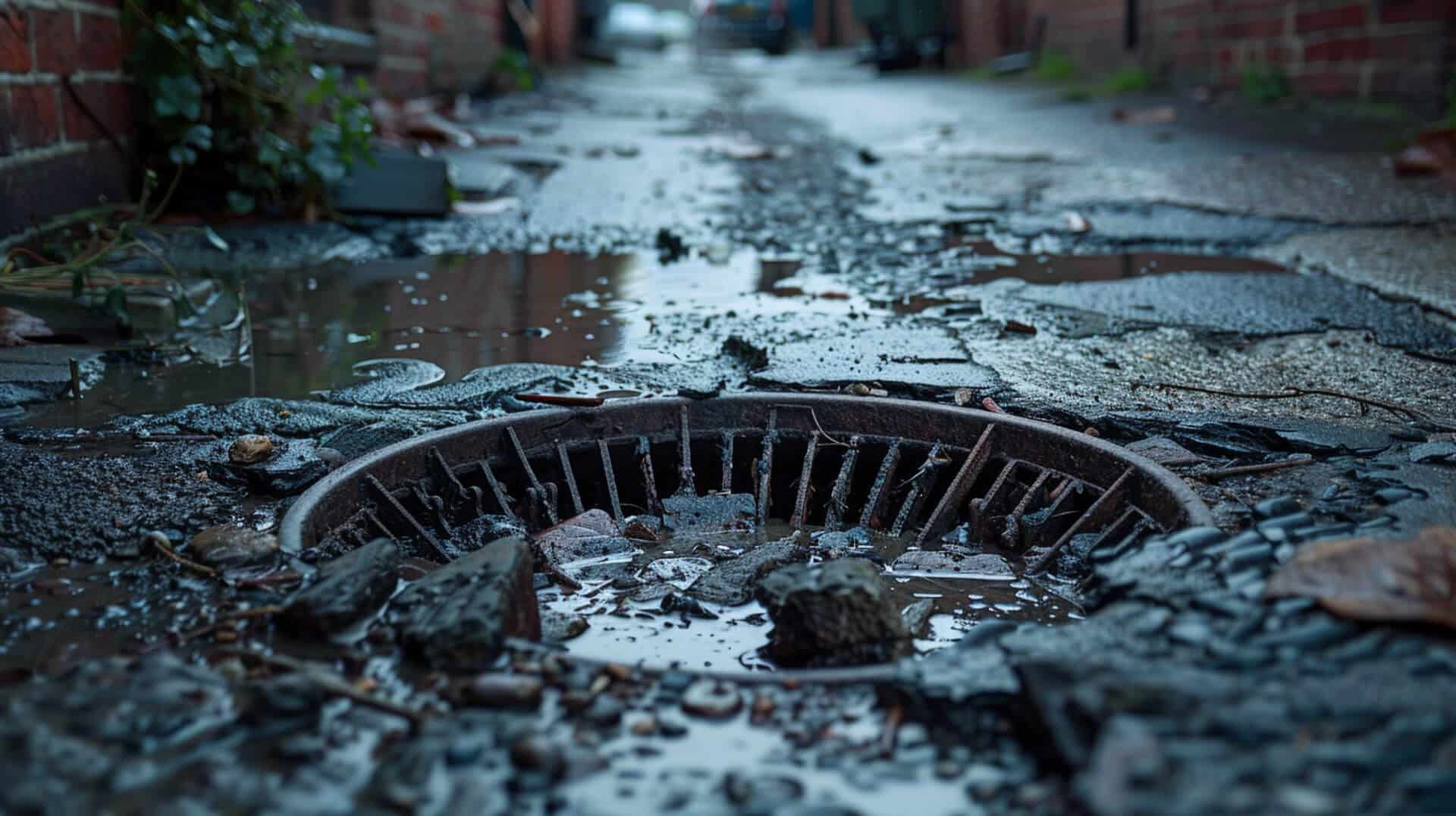
Blocked drains are a common issue that can range from a minor inconvenience to a significant problem. They occur when debris, such as dirt and mud, accumulates in the drainage system, obstructing the flow of water. This guide will focus on the causes, warning signs, and solutions for blocked drains caused by dirt and mud.
Impact on Property Owners, Business Owners, and Facility Managers
Blocked drains can have various negative impacts on property owners, business owners, and facility managers. These include:
- Structural Damage: Prolonged blockages can lead to water damage, affecting the structural integrity of buildings.
- Health Risks: Stagnant water from blocked drains can become a breeding ground for harmful bacteria and pests.
- Operational Disruptions: For businesses and facilities, blocked drains can disrupt daily operations, leading to potential financial losses.
Scope of the Guide
This guide will cover the following aspects related to blocked drains caused by dirt and mud:
- Common Causes: How dirt and mud enter and accumulate in drains.
- Warning Signs: Indicators that a drain is becoming blocked.
- Consequences: Potential short-term and long-term effects of blocked drains.
- Preventive Measures: Tips to prevent dirt and mud from entering drains.
- DIY Methods: Simple, at-home methods to clear blockages.
- Professional Help: When and why to seek professional assistance.
Importance of Addressing Blocked Drains Promptly
Addressing blocked drains promptly is crucial to prevent further damage and health risks. Ignoring blockages can lead to more severe issues, such as:
- Increased Repair Costs: Delaying the resolution of blockages can result in higher repair costs due to extensive damage.
- Health Hazards: Accumulated debris can lead to the growth of mould and bacteria, posing health risks.
- Operational Inefficiencies: For businesses, unresolved blockages can disrupt operations and affect productivity.
By understanding the causes, warning signs, and solutions for blocked drains, property owners, business owners, and facility managers can take proactive steps to maintain their drainage systems effectively.
Understanding Dirt and Mud in Drainage Systems
How Dirt and Mud Enter Drainage Systems
Dirt and mud can enter drainage systems through various means. Common sources include runoff from rain, washing machines, and outdoor activities. When it rains, water can carry soil and debris into outdoor drains. Washing machines can also contribute by discharging dirt and mud from clothes. Additionally, activities such as gardening or sports can introduce mud into the drainage system.
Common Sources of Dirt and Mud in Drains
- Rainwater Runoff: Carries soil and debris into outdoor drains.
- Washing Machines: Discharges dirt and mud from laundry.
- Outdoor Activities: Gardening, sports, and other activities can introduce mud.
- Foot Traffic: Mud from shoes can be washed into indoor drains.
Why Dirt and Mud Are Problematic for Drains
Dirt and mud are particularly problematic for drains because they can accumulate and form blockages. These materials can settle in pipes, reducing water flow and leading to clogs. Over time, the buildup can harden, making it more difficult to remove. Additionally, dirt and mud can attract other debris, exacerbating the blockage.
Typical Scenarios Where Dirt and Mud Cause Blockages
- Heavy Rainfall: Increased runoff can carry large amounts of soil into drains.
- Laundry Rooms: Washing machines can discharge significant amounts of dirt.
- Gardening Areas: Soil and mud from gardening can enter outdoor drains.
- Sports Facilities: Mud from sports equipment and footwear can clog drains.
By understanding how dirt and mud enter drainage systems and recognising the common sources and scenarios, property owners, business owners, and facility managers can take proactive measures to prevent blockages and maintain clear drains.
Warning Signs of Blocked Drains
Early Indicators of a Blocked Drain
Blocked drains can present several early warning signs. Recognising these indicators can help prevent more severe issues. Common signs include:
- Slow Drainage: Water takes longer to drain from sinks, bathtubs, or showers.
- Unpleasant Smells: Foul odours emanate from drains, indicating trapped debris.
- Gurgling Sounds: Unusual noises occur when water drains, suggesting air trapped in the pipes.
Identifying Blockages Caused by Dirt and Mud
Blockages specifically caused by dirt and mud can be identified through certain characteristics:
- Visible Debris: Mud or dirt may be visible around drain openings.
- Frequent Clogs: Drains that frequently clog after outdoor activities or heavy rain.
- Discoloration: Water may appear muddy or discoloured when draining.
Consequences of Ignoring Warning Signs
Ignoring the warning signs of blocked drains can lead to several consequences:
- Structural Damage: Prolonged blockages can cause water to back up, leading to potential damage to property foundations.
- Health Risks: Stagnant water can become a breeding ground for harmful bacteria and pests.
- Increased Costs: Delaying maintenance can result in higher repair costs due to severe blockages or pipe damage.
Differences in Residential vs. Commercial Properties
The warning Signs of Blocked Drains can vary between residential and commercial properties:
- Residential Properties: Signs may include slow drainage in sinks, bathtubs, and showers, as well as unpleasant smells in kitchens and bathrooms.
- Commercial Properties: Indicators may include slow drainage in multiple sinks or restrooms, gurgling sounds in large drainage systems, and visible debris in outdoor drains.
By understanding and recognising these warning signs, property owners, business owners, and facility managers can take timely action to address blocked drains and prevent further complications.
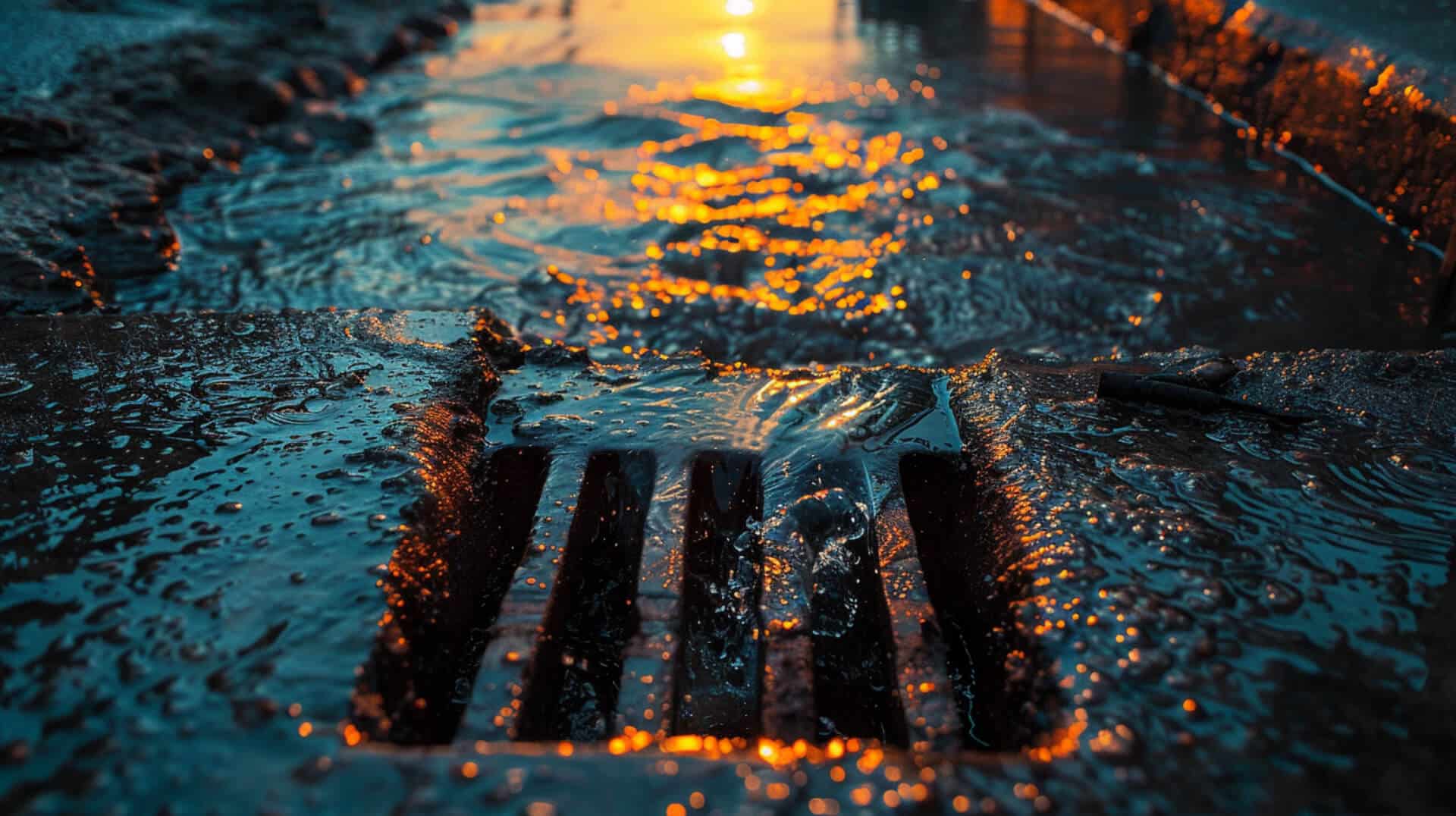
Immediate Actions for Suspected Blockages
What Should You Do First if You Suspect a Blockage?
If you suspect a blockage in your drainage system, the first step is to identify the source of the problem. Check for visible signs such as slow drainage, unpleasant smells, or gurgling sounds. These indicators can help pinpoint the location and severity of the blockage.
Tools and Materials Needed for Initial Blockage Assessment
To assess and address a suspected blockage, you will need the following tools and materials:
- Gloves: Protect your hands from debris and contaminants.
- Plastic Bags: For collecting and disposing of debris.
- Plunger: Useful for dislodging minor blockages.
- Drain Snake: Effective for reaching deeper clogs.
- Baking Soda and Vinegar: Natural remedy for minor clogs.
- Boiling Water: Helps dissolve grease and minor buildups.
How to Safely Attempt to Clear Minor Blockages Yourself
For minor blockages, you can attempt the following methods:
- Manual Removal: Wear gloves and use a plastic bag to remove visible debris from the drain opening.
- Plunger: Place the plunger over the drain and create a seal. Push and pull the plunger to dislodge the blockage.
- Drain Snake: Insert the drain snake into the drain and rotate it to break up and remove the clog.
- Baking Soda and Vinegar: Pour baking soda into the drain, followed by vinegar. Allow the mixture to sit for 15-30 minutes, then flush with boiling water.
When to Stop and Call a Professional
If the blockage persists despite your efforts, it is advisable to call a professional. Indicators that professional help is needed include:
- Persistent Blockages: If the blockage does not clear after multiple attempts.
- Severe Blockages: If water is backing up or overflowing.
- Root Ingress: If tree roots are suspected to be causing the blockage.
- Damaged Pipes: If there are signs of structural damage to the pipes.
By following these steps, you can address minor blockages effectively and know when to seek professional assistance for more severe issues.
Consequences of Ignoring Blockages
Structural Damages from Untreated Blockages
Ignoring blockages in drainage systems can lead to significant structural damage. Water that cannot flow freely through the pipes may back up, causing pressure to build up within the system. This pressure can result in cracks or bursts in the pipes, leading to water damage in walls, floors, and foundations. Over time, this can compromise the structural integrity of the property.
Health and Hygiene Impacts
Blocked drains can pose serious health and hygiene risks. Stagnant water in blocked drains becomes a breeding ground for bacteria and other harmful microorganisms. This can lead to unpleasant odours and the potential spread of diseases. Additionally, blocked drains can cause wastewater to back up into living or working spaces, creating unsanitary conditions.
Financial Implications of Severe Blockages
The financial implications of severe blockages can be substantial. Immediate costs may include emergency plumbing services to clear the blockage and repair any damaged pipes. Long-term costs can arise from structural repairs, mould remediation, and potential health-related expenses. Preventive maintenance is often more cost-effective than addressing severe blockages after they occur.
Pest Infestations Due to Blockages
Blocked drains can attract pests such as rodents and insects. Stagnant water and accumulated debris provide an ideal environment for these pests to thrive. Once pests infest a property, they can cause further damage and pose additional health risks. Addressing blockages promptly can help prevent pest infestations and the associated problems.
By understanding the consequences of ignoring blockages, property owners, business owners, and facility managers can take proactive measures to maintain clear drains and avoid these significant issues.
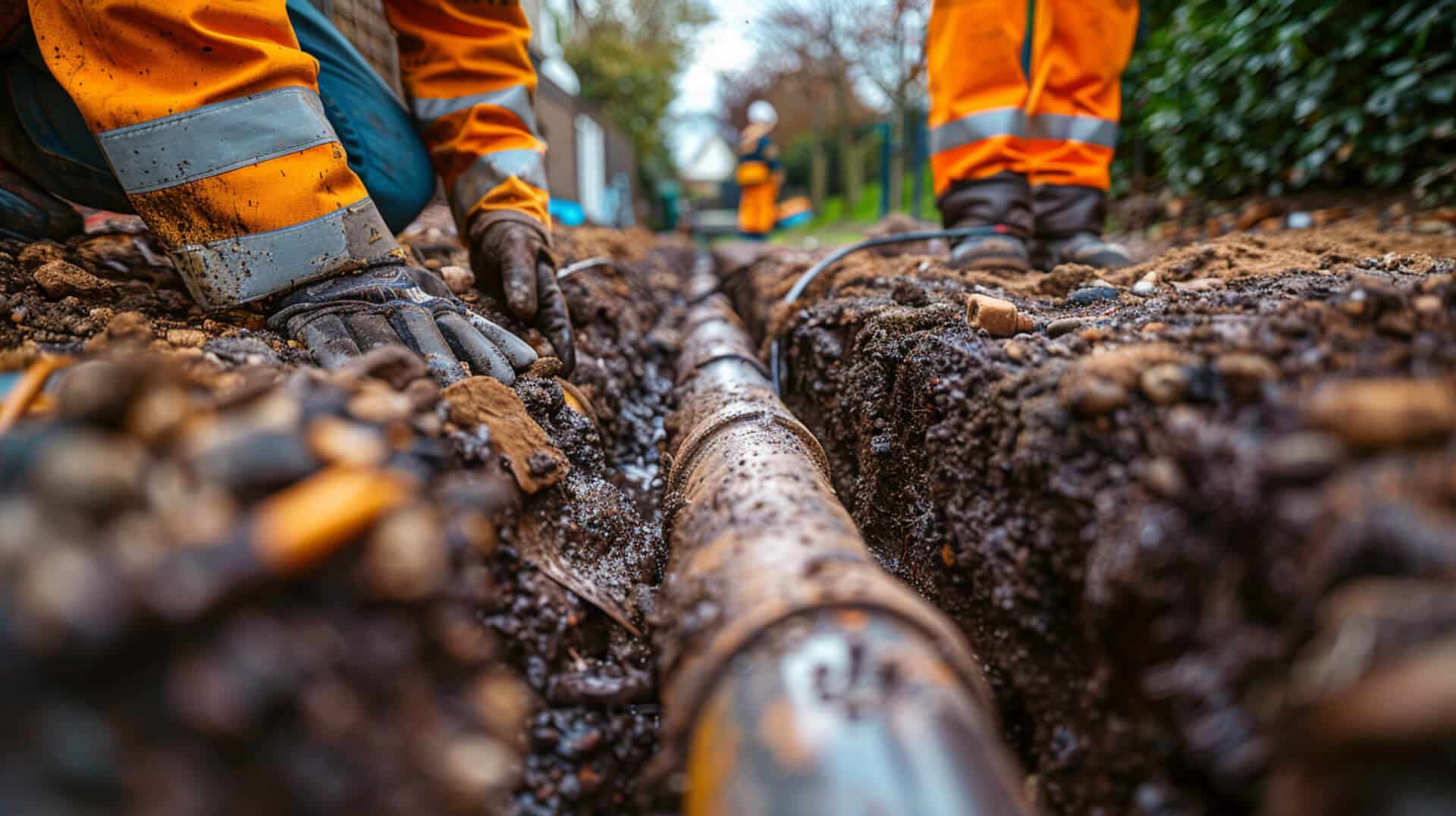
Preventive Measures for Dirt and Mud Blockages
Regular Maintenance Practices
Regular maintenance is essential to prevent blockages caused by dirt and mud. Implementing a consistent cleaning schedule can help keep drains clear and functional. Key practices include:
- Daily Cleaning: Remove visible debris from drain openings.
- Weekly Inspections: Check for signs of slow drainage or buildup.
- Seasonal Maintenance: Pay extra attention during fall and after heavy rains.
Minimising Dirt and Mud Entry
To minimise the entry of dirt and mud into your drainage system, consider the following strategies:
- Use of Strainers and Guards: Instal strainers in sinks and guards over outdoor drains to catch debris.
- Proper Disposal: Avoid washing large amounts of dirt or mud down the drain. Shake off excess dirt from clothes and shoes before washing.
- Clean Surrounding Areas: Regularly clean areas around outdoor drains to prevent debris from entering.
Tools and Devices for Prevention
Several tools and devices can aid in preventing blockages:
- Drain Covers: Prevent large debris from entering drains.
- Finer Grate Covers: Ensure smaller particles are also caught.
- Drain Guards: Specifically designed for outdoor drains to block leaves and mud.
Inspection and Cleaning Frequency
Regular inspections and cleanings are crucial for maintaining clear drains. Recommended frequencies include:
- Daily: Remove visible debris from drain openings.
- Weekly: Inspect drains for signs of slow drainage or buildup.
- Seasonally: Perform thorough cleanings, especially after heavy rains or during fall when leaves are abundant.
By following these preventive measures, property owners, business owners, and facility managers can effectively reduce the risk of blockages caused by dirt and mud, ensuring a well-maintained drainage system.
Effective Tools and Methods for Unblocking Drains
Most Effective Tools for Clearing Dirt and Mud Blockages
Clearing blockages caused by dirt and mud requires specific tools and methods. The most effective tools include:
- Drain Rods: Long, flexible rods used to dislodge blockages.
- Hydro Jetting: High-pressure water jets to clear deep clogs.
- Drain Snakes: Flexible augers that can reach and break up blockages.
- Plungers: Simple tools for minor blockages.
- Wet Vacs: High-powered vacuums for debris removal.
Using Drain Rods and Hydro Jetting
Drain Rods
Drain rods are effective for manually dislodging blockages. To use drain rods:
- Assemble the Rods: Connect the rods to the required length.
- Insert into the Drain: Push the rod into the drain until resistance is felt.
- Rotate and Push: Rotate the rod clockwise while pushing to break up the blockage.
- Remove Debris: Pull out the rod and remove any attached debris.
Hydro Jetting
Hydro jetting uses high-pressure water to clear blockages. To use hydro jetting:
- Set Up the Equipment: Connect the hydro jetting machine to a water source.
- Insert the Hose: Place the hose into the drain.
- Activate the Jet: Turn on the machine to release high-pressure water.
- Move the Hose: Move the hose back and forth to ensure thorough cleaning.
Pros and Cons of Chemical Cleaners
Chemical cleaners can be effective but come with pros and cons:
Pros:
- Quick Action: Can dissolve blockages quickly.
- Ease of Use: Simple to apply.
Cons:
- Corrosive: Can damage pipes if used frequently.
- Environmental Impact: Harmful to the environment.
Safely Using Household Remedies
Household remedies like baking soda and vinegar can be safe and effective for minor blockages. To use:
- Pour Baking Soda: Add a cup of baking soda into the drain.
- Add Vinegar: Pour a cup of vinegar into the drain.
- Wait: Allow the mixture to sit for 15-30 minutes.
- Flush with Boiling Water: Pour boiling water to clear the blockage.
By using these tools and methods, property owners, business owners, and facility managers can effectively address blockages caused by dirt and mud.
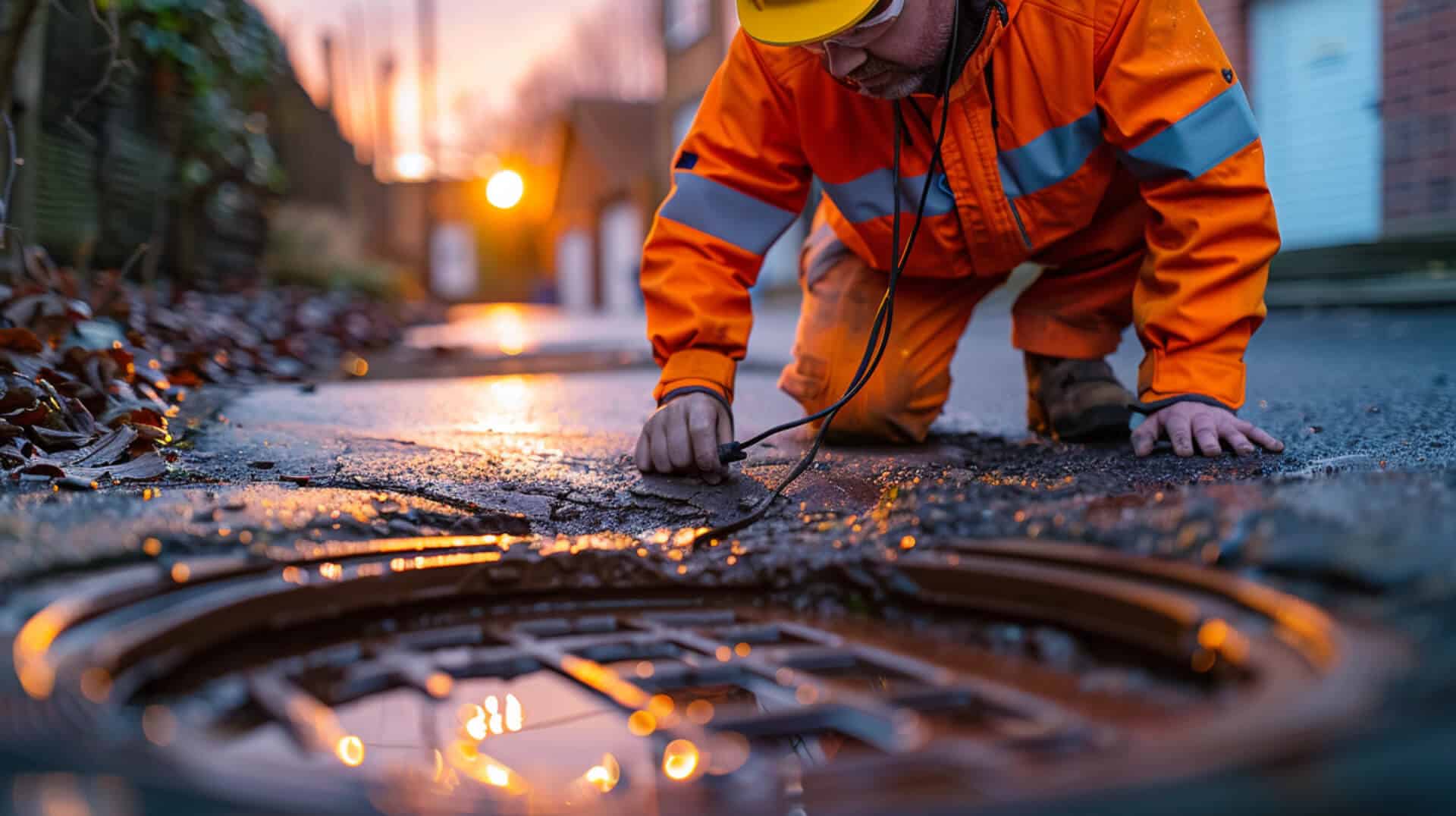
Professional Services for Severe Blockages
When Is It Necessary to Call a Professional?
Calling a professional is necessary when blockages persist despite initial attempts to clear them. Indicators that professional help is needed include:
- Persistent Blockages: If the blockage does not clear after multiple attempts.
- Severe Blockages: If water is backing up or overflowing.
- Root Ingress: If tree roots are suspected to be causing the blockage.
- Damaged Pipes: If there are signs of structural damage to the pipes.
Services Offered by Professional Drain Cleaners
Professional drain cleaners offer a range of services to address severe blockages. These services include:
- CCTV Drain Surveys: Using cameras to inspect the inside of pipes and identify blockages.
- High-Pressure Jetting: Using high-pressure water jets to clear deep and stubborn blockages.
- Drain Rodding: Using flexible rods to manually dislodge blockages.
- Wet Vacs: High-powered vacuums for debris removal.
- Industrial Waste Suction Tankers: For complete backups and large-scale blockages.
Diagnosing and Addressing Severe Blockages
Professionals use advanced techniques to diagnose and address severe blockages:
- CCTV Drain Surveys: Professionals insert a camera into the drain to visually inspect the blockage and determine its cause and location.
- High-Pressure Jetting: This method uses high-pressure water to break up and flush out blockages.
- Drain Rodding: Flexible rods are used to manually break up and remove blockages.
- Wet Vacs and Suction Tankers: These tools are used to remove large amounts of debris and clear severe blockages.
What to Look for in a Professional Drain Cleaning Service
When selecting a professional drain cleaning service, consider the following factors:
- Experience: Look for a service with a proven track record and experienced technicians.
- Technology: Ensure the service uses advanced equipment such as CCTV cameras and high-pressure jetting machines.
- Reputation: Check reviews and testimonials from previous customers.
- Availability: Choose a service that offers prompt and reliable assistance, especially for emergencies.
- Pricing: Ensure transparent pricing with no hidden charges.
By understanding when to call a professional and what services they offer, property owners, business owners, and facility managers can effectively address severe blockages and maintain clear drainage systems.
Long-term Maintenance Practices
Best Practices for Long-term Drain Maintenance
Maintaining clear drains over the long term requires consistent and proactive measures. Key practices include:
- Regular Cleaning: Remove debris from drain openings and surrounding areas.
- Use of Strainers and Guards: Instal strainers in sinks and guards over outdoor drains to catch debris.
- Proper Waste Disposal: Avoid washing large amounts of dirt or mud down the drain. Shake off excess dirt from clothes and shoes before washing.
Impact of Seasonal Changes on Drainage Systems
Seasonal changes can significantly affect drainage systems. During fall, leaves and debris can accumulate in outdoor drains, leading to blockages. Heavy rains in spring and summer can carry soil and debris into the drainage system. Winter can cause ice blockages in colder climates. To mitigate these effects:
- Fall: Regularly remove leaves and debris from outdoor drains.
- Spring and Summer: Ensure drains are clear before heavy rains.
- Winter: Insulate outdoor pipes to prevent ice blockages.
Role of Regular Inspections in Maintaining Clear Drains
Regular inspections are crucial for identifying potential issues before they become severe. Inspections should include:
- Visual Checks: Look for visible debris around drain openings.
- Flow Tests: Check for slow drainage or unusual sounds.
- Professional Inspections: Schedule annual inspections with a professional to identify hidden issues.
Creating a Maintenance Schedule
A maintenance schedule helps ensure consistent care for your drainage system. Consider the following:
- Daily: Remove visible debris from drain openings.
- Weekly: Inspect drains for signs of slow drainage or buildup.
- Monthly: Perform a thorough cleaning of all drains.
- Seasonally: Conduct extensive maintenance, especially after heavy rains or during fall.
By following these long-term maintenance practices, property owners, business owners, and facility managers can effectively maintain clear and functional drainage systems.
Innovations in Drainage Technology
Latest Technologies for Preventing and Clearing Blockages
Advancements in drainage technology have introduced several effective methods for preventing and clearing blockages. These technologies enhance the efficiency and reliability of drainage systems, ensuring they remain clear and functional.
How Hydro Jetting Machines and Drain Cameras Work
Hydro Jetting Machines
Hydro jetting machines use high-pressure water jets to clear blockages. The process involves:
- Setup: Connecting the machine to a water source.
- Insertion: Placing the hose into the drain.
- Activation: Releasing high-pressure water to break up and flush out blockages.
- Movement: Moving the hose back and forth to ensure thorough cleaning.
Drain Cameras
Drain cameras provide a visual inspection of the inside of pipes. The process includes:
- Insertion: Placing a small camera into the drain.
- Navigation: Guiding the camera through the pipes.
- Inspection: Viewing real-time footage to identify blockages and structural issues.
- Diagnosis: Using the footage to determine the cause and location of blockages.
Benefits of Using Industrial Waste Suction Tankers
Industrial waste suction tankers offer several benefits for managing severe blockages:
- High Capacity: Capable of handling large volumes of debris and wastewater.
- Efficiency: Quickly removes blockages and prevents backups.
- Versatility: Suitable for various types of blockages, including those caused by dirt, mud, and other debris.
How Technology Improves Long-term Drainage System Health
Technological advancements contribute to the long-term health of drainage systems by:
- Preventive Maintenance: Regular inspections with drain cameras help identify potential issues before they become severe.
- Effective Cleaning: Hydro jetting ensures thorough cleaning, reducing the risk of future blockages.
- Efficient Waste Removal: Industrial waste suction tankers efficiently remove large blockages, maintaining clear and functional drains.
By leveraging these innovations, property owners, business owners, and facility managers can ensure their drainage systems remain in optimal condition.
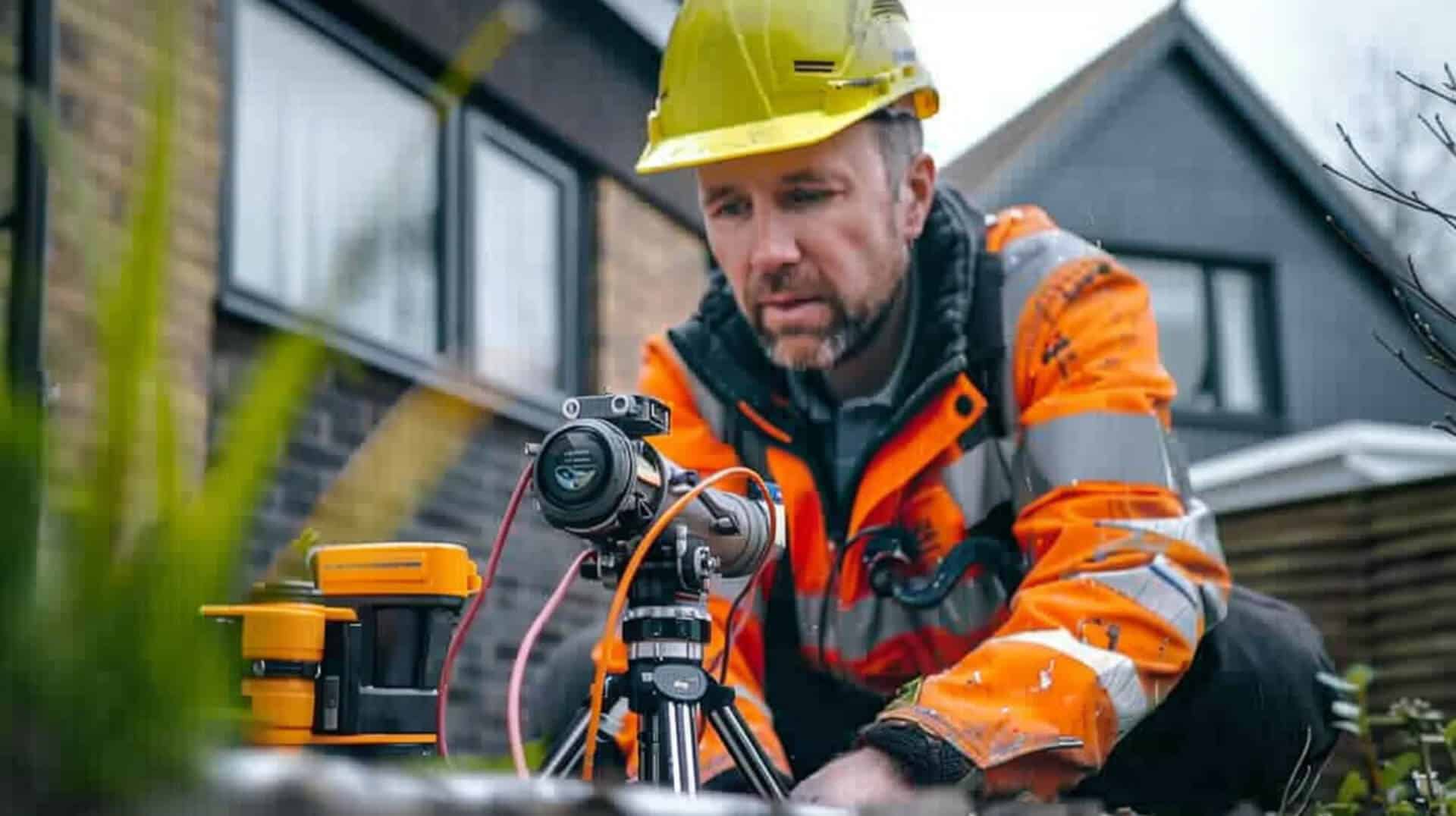
Environmental Impact and Legal Responsibilities
How Blocked Drains Affect the Environment
Blocked drains can have significant environmental impacts. When drains are blocked, wastewater can overflow and leak into the surrounding environment. This can lead to:
- Water Contamination: Pollutants from wastewater can contaminate local water sources.
- Soil Degradation: Overflowing wastewater can degrade soil quality.
- Ecosystem Disruption: Blockages can harm local wildlife and disrupt ecosystems.
Legal Responsibilities of Property Owners Regarding Drainage
Property owners have specific legal responsibilities to maintain their drainage systems. These responsibilities include:
- Regular Maintenance: Ensuring that drains are regularly inspected and cleaned.
- Prompt Repairs: Addressing any damage or blockages promptly to prevent environmental harm.
- Proper Waste Disposal: Avoiding the disposal of inappropriate materials that can cause blockages.
Contribution of Municipal Services to Drain Maintenance
Municipal services play a crucial role in maintaining public drainage systems. Their contributions include:
- Regular Inspections: Conducting routine inspections of public drains to identify and address issues.
- Emergency Response: Providing emergency services to clear severe blockages and prevent environmental damage.
- Public Education: Educating the public on proper waste disposal and maintenance practices.
Regulations for Waste Disposal and Drainage Maintenance
There are specific regulations governing waste disposal and drainage maintenance to protect the environment. These regulations include:
- Prohibited Materials: Restrictions on disposing of certain materials, such as fats, oils, and non-degradable items, into drains.
- Maintenance Standards: Requirements for regular maintenance and inspection of drainage systems.
- Reporting Obligations: Obligations to report significant blockages or damage to relevant authorities.
By understanding the environmental impact and legal responsibilities associated with blocked drains, property owners, business owners, and facility managers can take appropriate actions to maintain their drainage systems and comply with regulations.
Key Takeaways from This Guide
Importance of Proactive Maintenance
Proactive maintenance is essential for preventing blockages caused by dirt and mud. Regular inspections and cleanings can help identify potential issues before they become severe, saving time and money in the long run. Implementing a consistent maintenance schedule ensures that drains remain clear and functional.
Saving Time and Money
By addressing blockages early, property owners, business owners, and facility managers can avoid costly repairs and extensive damage. Simple preventive measures, such as using strainers and guards, can significantly reduce the risk of blockages. Investing in regular professional inspections can also help maintain the health of the drainage system.
Staying Informed About Drainage Issues
Staying informed about common causes of blockages and effective prevention methods is crucial. Understanding how dirt and mud enter drainage systems and recognising early warning signs can help you take timely action. Keeping up-to-date with the latest innovations in drainage technology can also provide more efficient solutions for maintaining clear drains.
Next Steps to Ensure Clear Drains
To ensure clear drains, consider the following steps:
- Implement Regular Maintenance: Establish a routine for cleaning and inspecting drains.
- Use Preventive Tools: Instal strainers, guards, and other devices to minimise debris entry.
- Educate Yourself and Your Team: Stay informed about best practices for drain maintenance and share this knowledge with your team.
- Seek Professional Help When Needed: Do not hesitate to call a professional for persistent or severe blockages.
By following these steps, you can effectively manage and prevent blockages caused by dirt and mud, ensuring a well-maintained drainage system.
